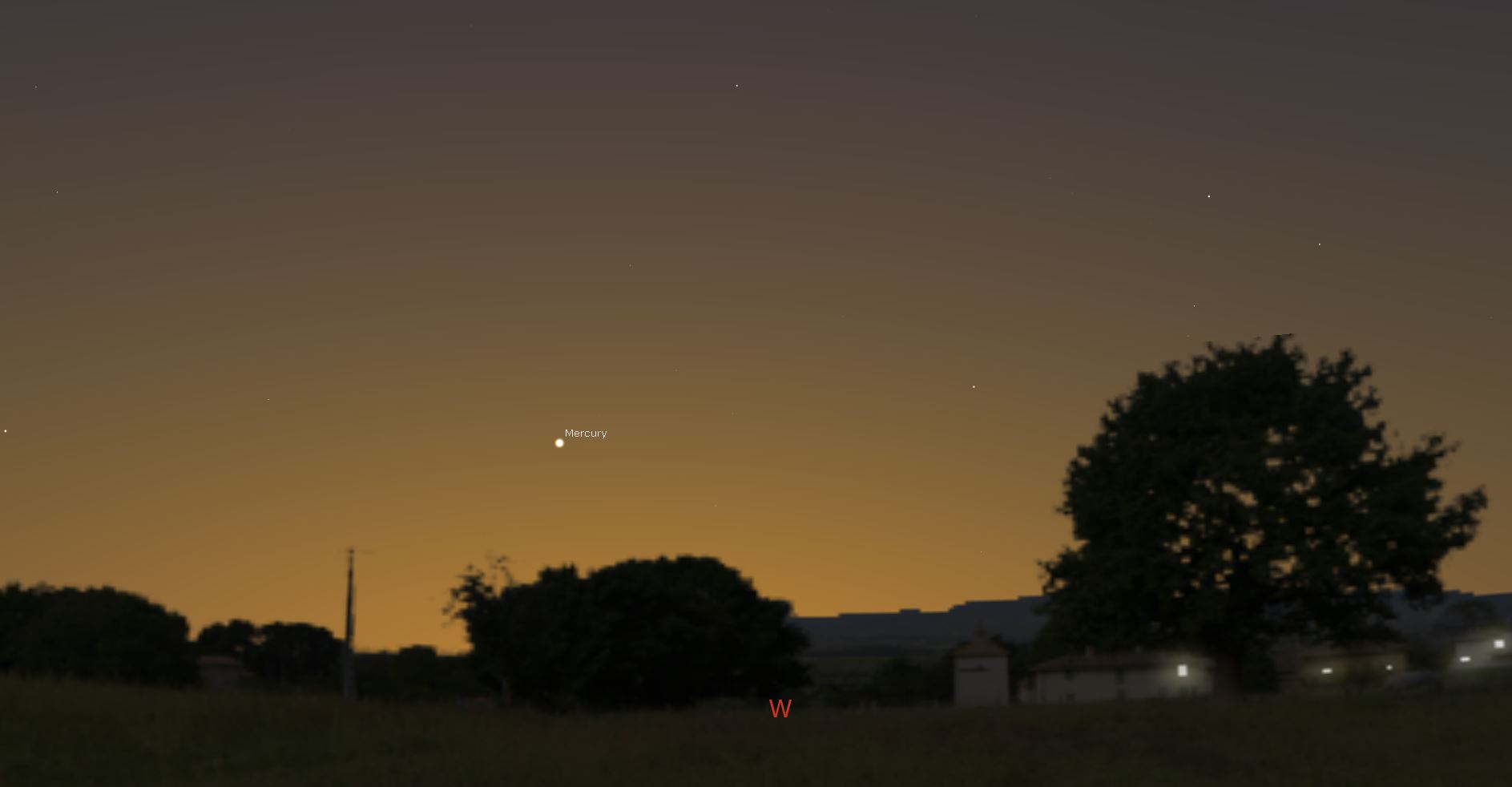Mercury Best Placed for Evening Viewing in 2019
February offers the best evening sky observing opportunity this year for the innermost planet, Mercury. More about that later because first I wanted to mention something of a crossover topic about some collectible coins released in recognition of the 50th anniversary of the first manned lunar landing in 1969 during the Apollo 11 mission.
In January the United States Mint released commemorative coins made with a variety of metals. On the reverse side is a closeup of the facemask of astronaut Buzz Aldrin walking on the moon with the Apollo lunar module, named Eagle, the planet Earth and fellow moon walker Neil Armstrong all “reflected” in the helmet’s visor. On the reverse side is an image of a boot print in the lunar dust. The unusual thing about these coins is that they are curved – like a helmet visor – and so are a unique item.
At the top of that list is a one quarter (1/4) ounce half eagle ($5 face value) gold piece – both proof and uncirculated coins available. Next is a huge 5 ounce proof silver dollar, and proof and uncirculated one ounce silver dollars. All silver coins are made of 99.9% silver. Last but not least are the proof and uncirculated commemorative clad half dollars.
As the year progresses, additional countries are getting into the act. The British Pobjoy Mint is coming out with its own one ounce Proof Sterling Silver Crown Ascension Island coin, with a moonscape on the reverse and their Queen on the obverse. Weighing in at a couple grams more than the U.S. silver dollar, this is another interesting Apollo coin.
Also notable is an unusual coin being minted (or cast?) for the island nation of Barbados by MDM Deutsche Munze is a ball-shaped silver coin in the shape of the moon, complete with boot print. Made from one ounce of 99.9% silver it is a thin but hollow coin. Other countries such as Poland have released spherical coins, but usually out of solid silver weighing in at up to 7 ounces. Barbados is also producing a one ounce 99.9% silver and 0.5 gram 99.99% gold coins — the “smallest gold coin.”
It’s great to see renewed worldwide interest in the Apollo moon program 50 years on.
After a comet encounter at the end of 2018 and a total lunar eclipse to kick off 2019, February continues to entice in a subtle way all its own as the best month in 2019 to see the planet Mercury, closest planet to the sun, in the evening sky at a somewhat normal time of day. That is because in late February Mercury will reach what is known among astronomers as its point of “greatest western elongation.” In other words, the gap between Mercury and the sun is at its largest during an evening apparition. Mercury will be standing at its highest above the horizon in the evening twilight than at any other time this year.
Mercury is arguably the most difficult of the naked eye planets to observe. Due to its proximity with the sun, the sun is always around somewhere while viewing Mercury. Mercury can never be seen late at night. It’s most easily viewed either just before sunrise (eastern elongation) or just after sunset (western elongation). February is the latter.
Start looking in the western sky around 6:30 or so starting the last week of February. At 6:30 p.m. on the 25th Mercury should appear in the west, 10 above a flat horizon. The actual elongation occurs the next night when, at greatest separation, Mercury is 18.1 degrees from the sun.

around 6:30 p.m., 35 minutes after sunset.
The Westminster Astronomical Society’s next happy hour star party at Milkhouse Brewery is planned for February 8, from 5-9 p.m. The telescope observing is free and weather permitting. The brewery is open rain or shine and located at 8253 Dollyhyde Rd, near Mt. Airy though across the county line in Frederick County near Libertytown.
–Curt Roelle
